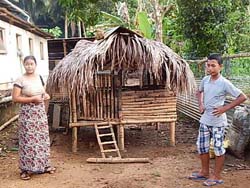 Agriculture is the main economic activity of the tribal society on the Car-Nicobar Island which is entirely rain-fed and coconut occupies more than 80% of the agricultural area. Apart from this, banana, papaya, tapioca and sweet potato are also grown on the island. Earlier, the farmers were practicing subsistence farming or natural farming and no fertilizers were applied. The entire tribal population depends on food items supplied by the government agencies on subsidized rate. Fruits and vegetables generally are not part of their diet except for some tuber crops, banana and pineapple mainly due to non-availability of fruits at the island.
Agriculture is the main economic activity of the tribal society on the Car-Nicobar Island which is entirely rain-fed and coconut occupies more than 80% of the agricultural area. Apart from this, banana, papaya, tapioca and sweet potato are also grown on the island. Earlier, the farmers were practicing subsistence farming or natural farming and no fertilizers were applied. The entire tribal population depends on food items supplied by the government agencies on subsidized rate. Fruits and vegetables generally are not part of their diet except for some tuber crops, banana and pineapple mainly due to non-availability of fruits at the island.
Intervention of CARI
Considering the physical, social and economic limitations of the Island, an integrated farming system model for homestead cultivation was developed in participatory mode by the Central Agricultural Research Institute (CARI). The model comprises of 400 m2 of fenced area in the vicinity of the tribal settlement and integrated with backyard poultry, goat farming and vermicomposting unit for organic waste recycling. The model was implemented in Kinmai and Kimios villages of Car-Nicobar and directly benefitted 40 farm families. After sensitization program on integrated farming system under Tribal Sub Plan of AICRP on Integrated Farming Systems, the farmers were given farm implements, fenced area of 400 m2 for growing vegetables and fruits, low cost shelters for poultry and four numbers of goat. Vegetable seeds (okra, brinjal, tomato, green amaranth, cucumber, bitter gourd and bottle gourd) and fruit seedlings (banana, pineapple and papaya) were distributed after imparting skills on vegetable and fruits cultivation. Sesbania sp. (agathi) a multipurpose legume tree was introduced for the first time from mainland as a biofence, green fodder and green leaf manure.
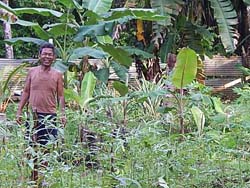
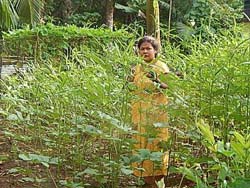
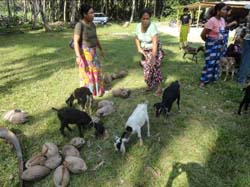
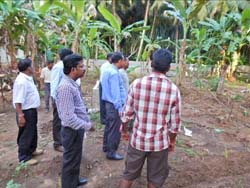
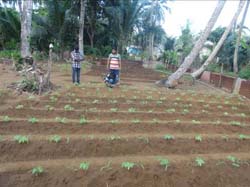
Impact
During the implementation process, initially the farmers were skeptical about the model but in-due course fruits and vegetable in their backyard and the fast growing healthy chicks and
goats changed their attitude. For the first time in Nicobar, the villagers harvested a bumper crop of vegetables in their homestead garden.
Miss Shilpa is one such beneficiary who is a resident of Kinmai village and shown enthusiasm to accept and adopt the technology. She successfully harvested 50 kg. okra, 20 kg. green amaranth, 10 kg. radish, 10 kg. bottle gourd within four months after intervention. Now, she has become a role model for not only her village but also for the entire tribal community of Nicobar. The same case was with the other Nicobarese who adopted this model. Now, farmers from other villages were motivated by the success of these farmers and most of the village captains are requesting to implement such model in their villages. These interventions made a positive impact on the utilization of scarce resources under fragile island ecosystem benefitting tribal farmers at large.
(Source: CARI, Port Blair)








Like on Facebook
Subscribe on Youtube
Follow on X X
Like on instagram